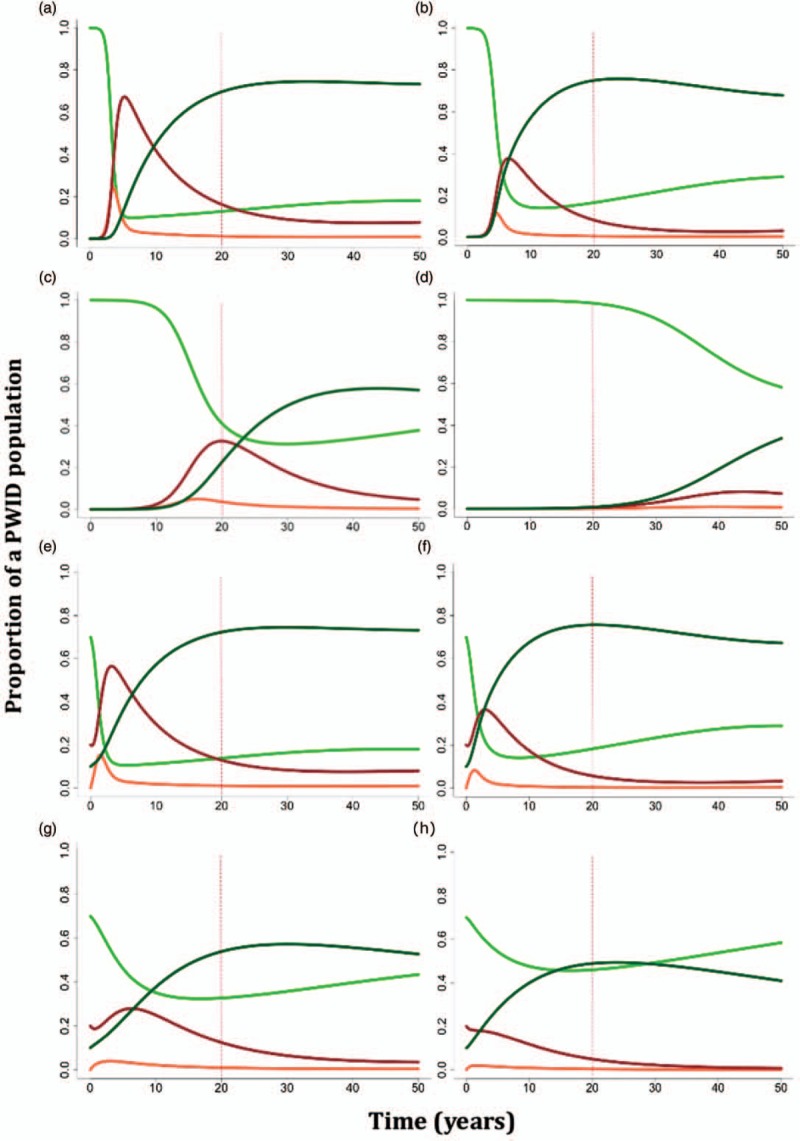Fig. 2.
Results of the compartmental model representing HIV spread under different treatment scenarios.

(a)–(d) HIV spread during an outbreak. (a) and (b) Scenarios when 0 and 25% of recently infected individuals, respectively, and 50% of long-term infected individuals (for both a and b) are provided with treatment, while no other preventive services are suggested. (c) and (d) Scenarios when, in addition to providing treatment, other harm reduction interventions are introduced, so that R0,a is reduced to 4. (e)–(h) HIV spread in a well established epidemic. (e) and (f) Scenarios when 0 and 25% of recently infected individuals, respectively, and 50% of long-term infected individuals (for both e and f) are provided with treatment, while no other preventive services are suggested. (g) and (h) Scenarios when, in addition to providing treatment, other harm reduction interventions are introduced, so that R0,a is reduced to 4.
